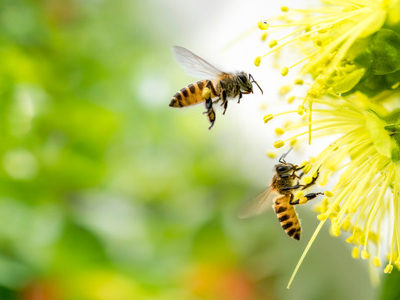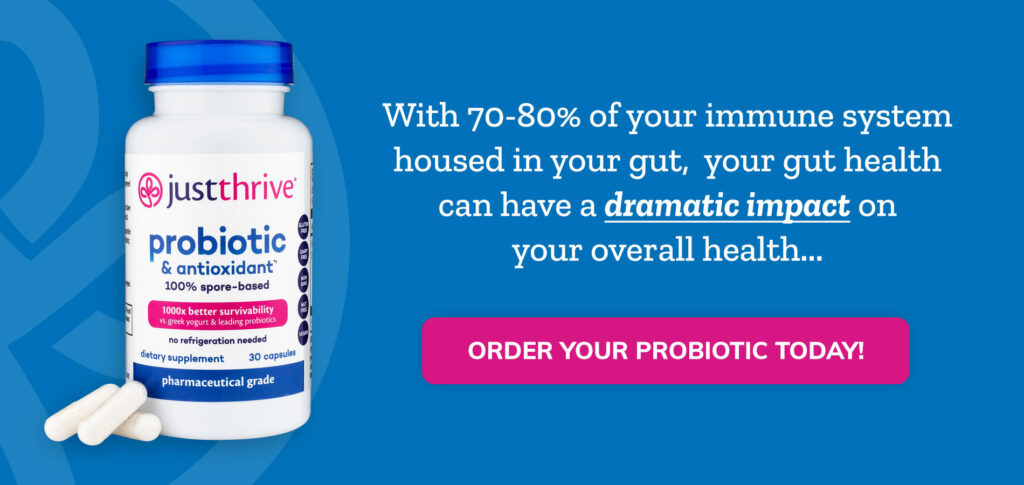Put on your imaginary cape and find out how to save the bees from extinction today! Read on to find out more.
RELATED: Review: “Burt’s Buzz” Tells The Story of The Man Behind Burt’s Bees
In this article:
- Why Should We Save the Bees?
- The Economic Impact of the Disappearing Bee Colony
- What’s Killing the Honey Bees?
- How Do We Save the Bees?
How to Help Save the Bees from Utter Destruction and Be the Real-Life Captain Planet
Why Should We Save the Bees?
The answer is simple: when you know how to save the bees, you can also save the planet and the human species.
The bee colonies do more than take care of their queen and the hive. They have a significant role in maintaining our health.
The holistic purposes of honey have been well-discussed within health communities. Many people are familiar with the numerous remedies and benefits from its topical application and consumption.
Raw honey, in particular, has been praised for the following:
- Improving healthy weight management
- Countering allergies
- Being a natural source of energy
- Healing wounds
The list of benefits is not the only thing that marks honey’s importance, however. What about the bees that provide this golden elixir for the betterment of our lives?
Let’s investigate the ways these warrior bees are crucial to our health and planetary wellness too:
- One out of every three or four bites of food we eat is thanks to these buzzing friends.
- Bees pollinate 80% of the world’s plant crops, including 90 different food crops.
- Americans eat about 1.31 pounds of honey per person every year.
- That one pound of honey is a result of the bees visiting two million flowers, as well as flying 55,000 miles.
Understanding the effort that bees have made into the creation of our honey can give us a great visual the next time we vie for a spoonful of this liquid gold.
Even more, it’s important to understand that bees play a pivotal role in how our favorite foods end up on the table and into our mouths.
The Economic Impact of the Disappearing Bee Colony
From apples to almonds, and blueberries to broccoli, the humble honey bees make it possible for us to munch on these treats and keep our economy alive.
Yes, bees actually help to keep the economy buzzing. That’s another reason to learn how to save the bees.
“More than $15 billion a year in U.S. crops are pollinated by these honey bees,” according to the Natural Resources Defense Council, Inc. They also “produce about $150 million in honey annually.”
What happens to our economy if the bee population continues to decline?
In the said report, it has been estimated “the global economic cost of bee decline, including lower crop yields and increased production costs, is as high as $5.7 billion per year.”
Unfortunately, there is now a condition known as colony collapse disorder. It is wiping out bee populations from solitary bees to native bees.
It is especially disconcerting as more than 25% of the managed honey bee population in the United States have disappeared since 1990.
What’s Killing the Honey Bees?
The colony collapse disorder is attributed to a wide range of factors that are all intricately linked together:
1. Global Warming
Because of global warming, flowers are blooming much earlier or later than usual. This becomes a problem because the flowers that were supposed to be the food of the pollinators (that just woke from hibernation) have bloomed already.
Climate change can also affect bee health. A Northwestern University revealed the warmer climate can wipe out more than 30% of the Arizona native bees on the first year.
The increase in temperature drops these pollinating insects to their physiological limits. They are prone to having a lower body fat and body size.
These changes are significant as size matters to them. The bigger the body, the more likely they have sufficient energy stores.
2. Pesticides
The very toxic pesticides used to kill plant pests are harming the honey bees. There are several pesticides that are legal in the United States but are banned for use in other countries because they harm the bees.
3. Habitat Loss
It can be brought about by the development and abandonment of beekeeping farms. It may also be due to growing crops that do not allow room for wildlife.
Even growing gardens with flowers that are not pollinator-friendly can contribute to habitat loss.
4. Parasites
Icky insects such as the bloodthirsty vampire mite (varroa mites) actually feed on bees and have led to them dying off in droves.
In other words, most of the reasons why they’re vanishing are due to humans! It’s only right we take full responsibility and save the honey bees today.
RELATED: The Evolution (Or Devolution) Of Bees From A Former Beekeeper’s Perspective
How Do We Save the Bees?
Despite the seriousness of the bee’s colony collapse, there are simple steps we can all take to help preserve our honey bee friends. They can also promote a more pollinator-friendly planet for them.
Here are four small ways we can help the bees big time:
1. Ditch the Mulch
It’s important to leave a little ground bare in your yard or garden. Bees are solitary creatures. About 70% of them dig a nest in the ground to raise their young.
To do this, the female bee has to look for bare dirt and dig a tunnel. It then takes many visits to these tunnels, bringing pollen and nectar to feed their young.
When there’s mulch on the lawn, they will avoid these soils and look elsewhere. It’s not a problem until you realize many farmers these days use it.
Keep clear of the mulch (if you can), so the bees can raise their young!
2. Skip the Chemicals
Many pesticides (neonicotinoids, in particular) have been linked to killing bees and hurting their ability to reproduce.
Instead of spraying the toxic chemicals that hurt our health and detriment the atmosphere, look for plants that naturally repel pests such as garlic for aphids or basil for tomatoes.
Ultimately, avoiding the bad ingredient bottles will help to nurture and protect the soil’s biome. It’s another way to keep the plant’s immune systems strong and attract bees to come back for more.
Even better, you can also grow organic food such as fruits and vegetables. You don’t have to use pesticides that can contaminate the soil and the seeds.
3. Go Loco for Local Honey
Every time you purchase some raw, local honey, you are supporting local beekeepers and their bees. What makes raw, unheated honey so great?
It’s unpasteurized and undiluted, meaning it’s brimming with antioxidants.
The honey also contains probiotics, which help improve gut health. You can even get lots of the needed enzymes.
You can save bees by buying raw local honey in the grocery stores or the farmer’s market. The latter has an advantage, however.
You are less likely to encounter adulterated honey there. This is a type of honey with additional sugars that can be bad for your health.
4. Feed the Bees
You don’t need to go into bee farming before you can help save the bees. You can just ensure they have plenty of food sources.
Consider investing in bee-friendly plants. These can range from flowering plants such as wildflowers to herbs, trees, and shrubs.
Some excellent choices are:
- Blackberry or raspberry
- Strawberry
- Lily of the valley
- Sage
- Rhododendron
- Honeysuckle
- Sunflower
- Butterfly bush
- Dahlia
These plants don’t only serve as food for bees. They can also improve your home’s curb appeal.
Note: Don’t forget to give them water as well! All you need is a bucket filled with clean water and corks for them to land on.
If bees impact nearly every bite of food we take, it’s important we raise our honey dippers. We have to reimagine ways to save the bees and support our local pollinator friends.
Spread the news, seek out local honey spots, and say goodbye to the toxic chemicals that betray our dear friend, the bees.
Up Next:
- Natures Allies with Larry A. Nielson
- Want To Create Your Own Indoor Garden? Here’s A Step-By-Step Guide
- Getting Kids To Eat Veggies
Editor’s Note: This article was originally published on December 7, 2017, and has been updated for quality and relevancy.


